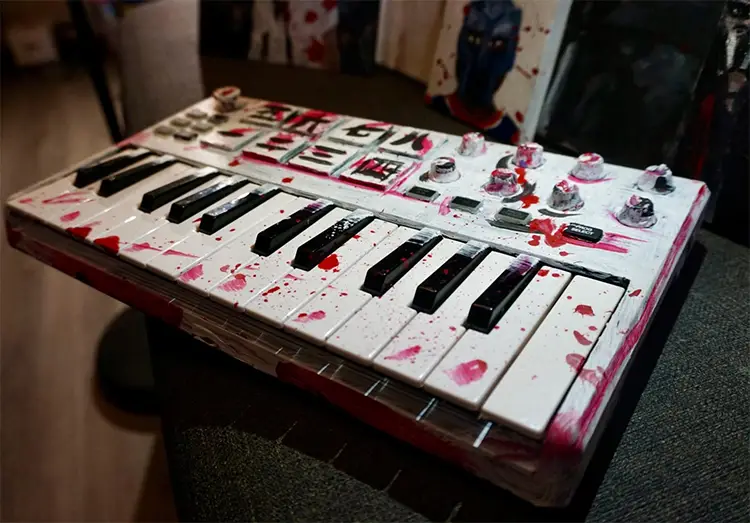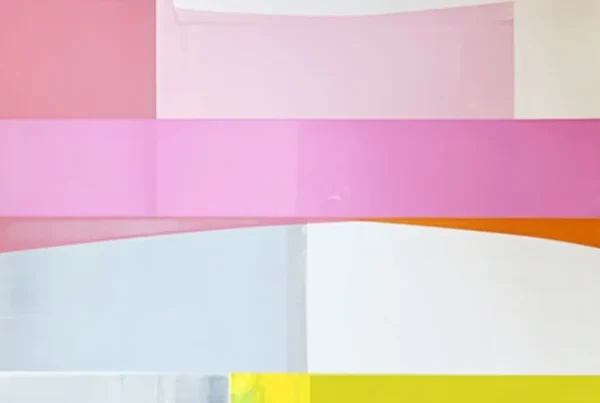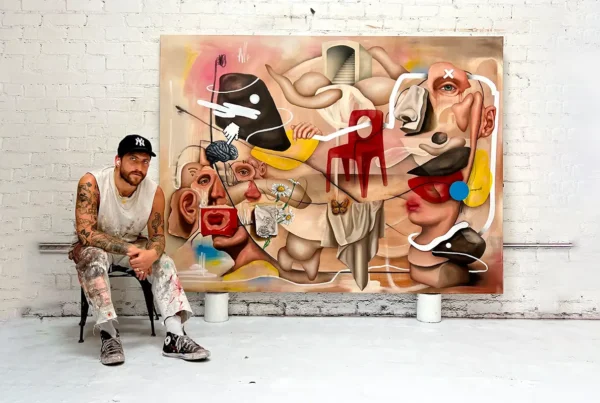“I want you to think about what you really feel but would never say, and realize I’ve managed to do this through a painting.”
Rhythms of a Restless City
Emerging from the multifaceted streets of Sacramento, Raz Forh carries within his work the vibrations of a city where hip hop, urban culture, and martial arts intersect. Known first for his lyrical prowess as a respected underground rapper, Raz has swiftly gained recognition in the visual arts world as a self-taught painter with a voice as raw on canvas as it is on a microphone. In only a year of painting, he has evolved from curious experimentation to international recognition, a transition that mirrors the same tenacity and grit he developed as an athlete and lyricist. His story is not one of formal art education or inherited tradition, but rather one fueled by instinct, discipline, and a relentless pursuit of growth.
Painting with acrylic, and soon transitioning into oil, Raz approaches the canvas like he approaches life — with intensity, commitment, and a deep awareness of his environment. Influenced by a childhood steeped in cartoons like Dragon Ball and teenage years filled with graffiti sketches in school bathrooms, his visual art is an extension of a lifelong creative impulse. What started as an attempt to design an album cover turned into a profound calling. Despite early struggles with technique, he saw promise in the imperfections and continued forward, fueled by an unshakable belief in self-expression. That decision to “follow through” became a turning point, anchoring his identity as both a rapper and a painter.
Every brushstroke Raz lays down is informed by his lived experience as a young Black man navigating spaces that rarely embrace vulnerability. His work is steeped in the truths of his community, where expressions of emotion are often suppressed but urgently felt. He paints the moments that aren’t easily spoken — street survival, joy amidst chaos, heartbreak, and redemption — translating personal and collective memory into visual narratives. It is in this contrast between unfiltered emotion and composed execution that Raz Forh finds his voice as a painter.
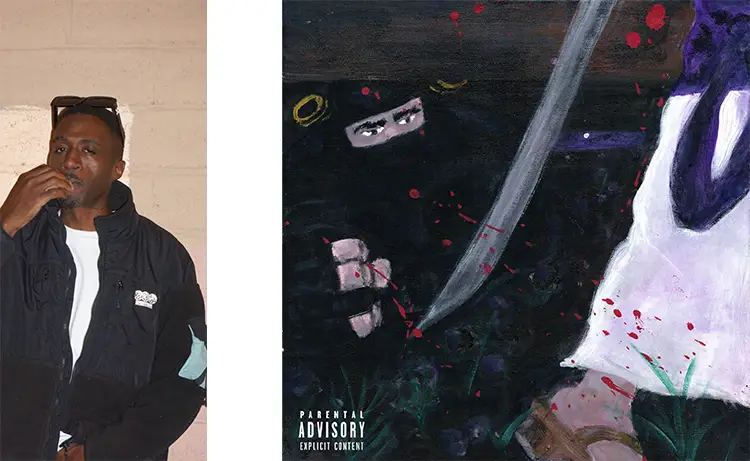
Raz Forh: From the Ring to the Canvas
The discipline required to become a successful athlete has given Raz an edge in his creative endeavors. Having played Varsity Basketball, competed in Track and Field, and trained in Muay Thai and boxing for years, his body understands commitment, repetition, and focus — qualities that now fuel his artistic growth. This physical training has conditioned him to push through setbacks, remain consistent in his work, and thrive under pressure. Unlike many artists who battle with motivation or momentum, Raz draws from a mental framework sharpened by athletic training, bringing both aggression and grace to his art-making process.
His upbringing and creative evolution have never followed a conventional trajectory. Drawing cartoons led to tagging bathrooms with graffiti, which eventually bled into poetry and songwriting. Art, in all its forms, became the only constant through turbulent years and shifting ambitions. Although painting only entered his life by chance — initially as a failed album cover design — it quickly became a medium through which he could express aspects of himself that words couldn’t capture. What makes this journey remarkable is how quickly and intensely he embraced the unfamiliar. Within a year, his artwork began garnering international recognition, proof that natural vision and life-hardened perspective can outpace years of academic training when the voice behind the work is authentic.
His painting style is defined less by technique and more by purpose. Raz doesn’t aim to fit into artistic categories. Instead, he brings a visual language that speaks to emotional rawness and the realities of street life. He creates from the viewpoint of someone who has felt the weight of silence, of being misunderstood, and transforms that into images that challenge viewers to face what’s often left unsaid. His perspective is invaluable — there are few artists who can speak to the urban Black male experience with such clarity, vulnerability, and visual fluency.
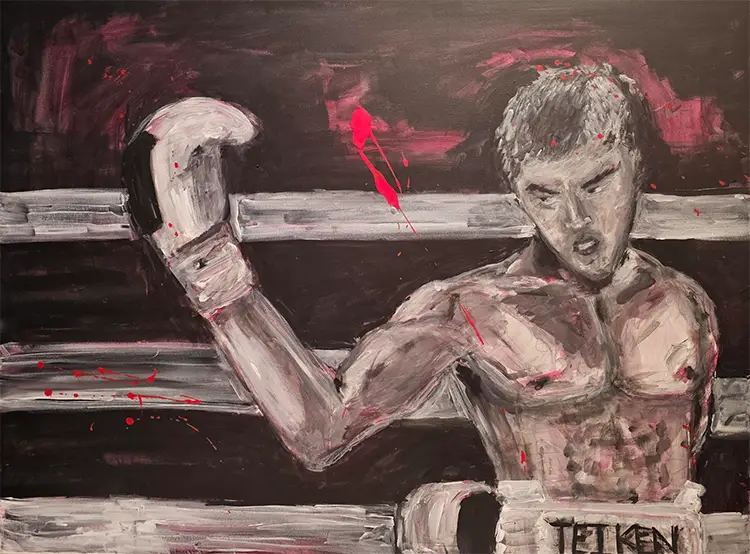
Between Shaolin and Sargent
Cinematic influences play a crucial role in shaping Raz’s aesthetic sensibilities. Growing up watching old gangster classics and black-and-white samurai epics with his father gave him an early appreciation for visual storytelling, movement, and drama. Directors like Akira Kurosawa and the Shaw Brothers planted the seeds for a narrative approach that is now visible in his compositions. These filmic elements converge with the lyrical grit of the Wu-Tang Clan, an influence that bridges his dual identity as a musician and a visual artist. His artistic lens is saturated with rhythm, movement, and an unflinching sense of honesty — qualities also found in the worlds of both hip hop and martial arts.
Raz’s creative reach extends across a wide span of art history and contemporary culture. He’s inspired by the painterly elegance of John Singer Sargent, the wild freedom of artists like Neckface and Slawn, and the shadowy brilliance of Caravaggio. This eclectic mix reflects his refusal to be boxed into a singular genre or school. He also draws creative energy from his surroundings — Sacramento’s vibrant art scene continuously feeds his imagination. In a city where murals, exhibitions, and grassroots movements flourish, there’s always a fresh source of inspiration to pull from, allowing Raz to remain both grounded in his community and open to global influence.
At the heart of his work lies a desire to articulate difficult emotions and provoke meaningful reflection. He is not interested in shock for its own sake but rather in excavating emotional truths. Themes such as triumph, regret, aspiration, and spiritual tension recur throughout his art. Raz aims to paint the kind of conversations that don’t need words — the heavy silences, the quiet knowing, the dreams people barely admit even to themselves. His goal is for viewers to confront those unsaid thoughts and to realize that art can hold those complex, contradictory emotions with integrity.
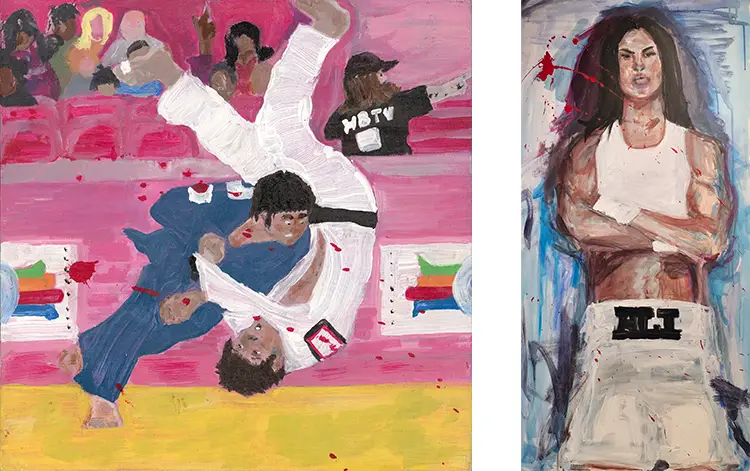
Raz Forh: Legacy in Progress
Among Raz’s growing portfolio, one painting holds particular weight: NASIR, a portrait of the legendary hip hop figure Nas. The piece transcends simple tribute; it stands as a visual reflection of Raz’s own path. Like Nas, Raz found himself respected within underground circles from a young age but also diverted by life’s more dangerous currents. There is a haunting sincerity in the way he captures Nas’s likeness — not just the face, but the quiet strength, the unspoken pain, and the creative fire. That the piece has been featured in international art publications speaks to its resonance beyond his personal connection, anchoring him as a serious contender in the art world despite his short tenure as a painter.
NASIR is more than a portrait — it’s a mirror of Raz’s own transformation. In choosing Nas as a subject, he is nodding to the dreams he once chased and the battles he survived along the way. The painting was created in acrylic, the medium Raz has relied on during his first year of artistic experimentation. This choice of medium, coupled with the intimate subject matter, makes NASIR a milestone in both craft and purpose. It symbolizes a convergence of the past and the present, where hip hop, street survival, and artistic ambition all meet at the same canvas.
Even with growing acclaim, Raz’s daily life remains deeply rooted in hard work and sacrifice. Balancing fatherhood, a day job, and an escalating art career, he remains focused on his next major goal: a digital solo exhibition with Teravarna, an international gallery that will host his work this fall. This upcoming show marks a significant moment in his evolution — not just as an artist, but as a person who has consistently risen above his circumstances. While many with similar pasts may never access such platforms, Raz Forh is living proof that resilience, creativity, and truth-telling can create new paths where none existed.
